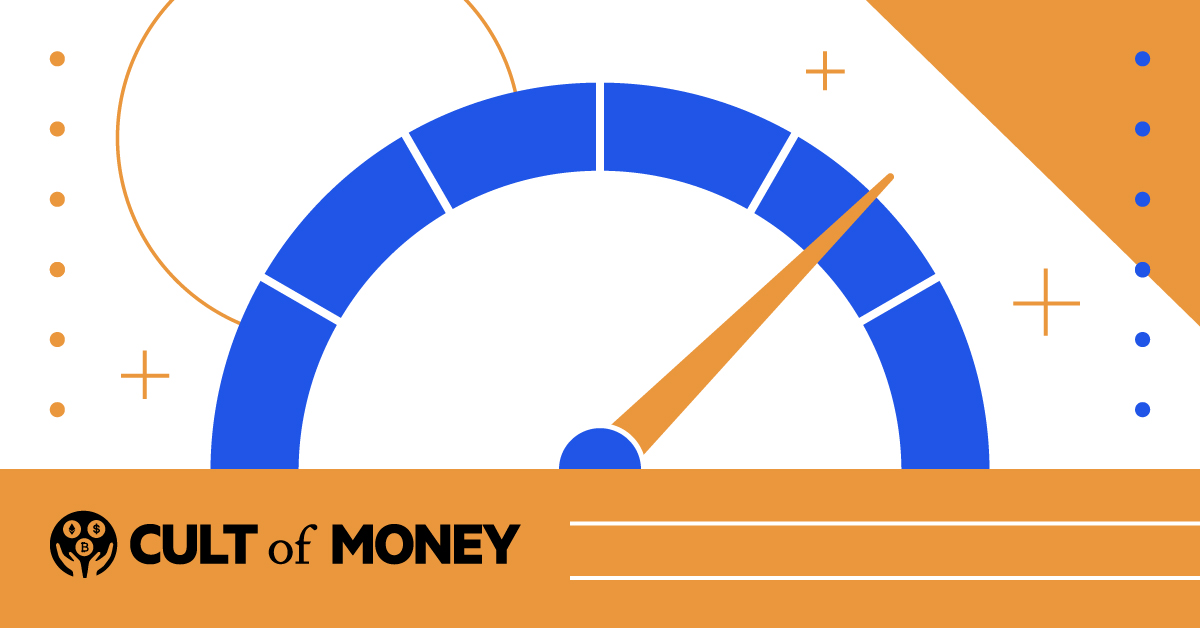
Investors — no matter their asset class of choice — are often interested in using different indicators to help them figure out whether it’s a good time to invest.
One of the indicators that some investors use to decide if stocks are undervalued because of excessive fear, or if they’re overvalued due to excessive greed, is the Fear and Greed Index.
Here’s what you need to know about what this index measures and whether it makes sense for you to use in your portfolio strategy.
What Is The Fear And Greed Index?
The Fear and Greed Index was developed by CNN Money to help investors gauge whether stocks are fairly priced. The idea is that too much fear can drive share prices lower because people are selling their stocks out of panic, depressing prices. On the flip side, too much greed, with people buying excessively, can drive prices higher than what the intrinsic value of the stocks might be.
There are seven different components that are scored based on how much the indicators are deviating from their averages. Each of the components is given a score from 0 to 100, where 0 represents maximum fear and 100 represents maximum greed. The components are also equally weighted, based on the score.
By looking at the index, you can see where the market as a whole is. For example, as of this writing on June 6, 2022, the Fear and Greed Index is just above 25, indicating that fear is the sentiment driving the market. As a result, the Fear and Greed Index indicates that stocks are likely undervalued at this point.
What Are The Components?
The different components to the Fear and Greed Index are used to come up with a sentiment that seems to be driving the market. The seven components are:
Stock Price Momentum
Measured by how the S&P 500 is doing on the day, compared to its 125-day moving average. If the S&P 500 is above its moving average, that’s an indication that momentum is rising and greed could be at play. On the other hand, when average on the day is below the moving average, it could indicate that investors are fearful.
Stock Price Strength
This measure looks at the stocks listed on the New York Stock Exchange (NYSE) and looks at how many stocks are trading at their 52-week highs versus their 52-week lows. If more stocks are trading near their highs, it’s an indication that greed might be driving sentiment. Conversely, if more stocks are trading near their lows, fear could be driving the markets.
Stock Price Breadth
With stock price breadth, CNN Money looks at the volume of stocks with rising prices versus the volume of stocks with falling prices. As you might expect, if there are more stocks with rising prices, greed is in operation, while falling prices indicates that fear is driving the markets.
Put And Call Options
Put options are contracts that give the owner the right to sell an asset at a certain price by a certain date. On the other hand, call options are designed to give the contract owner the right to buy. CNN Money looks at the ratio of put options to call options and uses that in the Fear and Greed Index. When the ratio rises above 1, that’s considered a bearish signal and one that indicates fear is in operation.
Market Volatility
When measuring volatility, it’s about price fluctuations. How wide are they? Are they becoming more frequent? The CBOE Volatility Index (VIX) is a well-known indicator of sentiment based on volatility. The Fear and Greed Index uses the daily VIX compared to its 50-day moving average to determine current drivers of market sentiment. If market volatility is increasing, that’s a sign that fear is driving the market.
Safe Haven Demand
Next, CNN Money takes a look at how much demand there is for safe havens like government bonds. When rating this component of the Fear and Greed Index, Treasury bond returns are compared to stock returns during the previous 20 trading days. If the increased demand for bonds is resulting in higher returns, that could indicate that fear is driving the stock market. On the other hand, as more people pile into stocks as compared to bonds, it indicates that market sentiment is trending toward greed.
Junk Bond Demand
Finally, the Fear and Greed Index looks at the yield spread between junk bonds and investment grade bonds. Junk bonds are considered riskier than investment grade bonds. In times of fear, there’s a wider spread between yields because junk bonds need to offer higher yields in order to compete with safer bond investments. However, during a time of greed, the yield spread is smaller. If junk bonds offer yields that are closer to safer bonds, that’s an indication that stocks could be overvalued as greed is in operation.
How Can You Use The Fear And Greed Index?
The main use for the Fear and Greed Index is to get a feel for what’s driving market sentiment. Warren Buffett pointed out that it was good to be fearful when others are greedy and greedy when others are fearful. When deciding when it makes sense to buy more stocks, using the Fear and Greed Index can give you an idea of how investors, in general, feel.
For those who are looking for bargains, it can make sense to buy shares when the Fear and Greed Index indicates that there’s more fear. For example, if the index is between 0 and 25, the market is considered to be driven by “Extreme Fear.” Prices are probably lower than they should be, and you might be able to find good deals on stocks.
On the other hand, when the index is above 75, it indicates “Extreme Greed,” and you might want to hold off on buying. Some investors might stick with their dollar-cost averaging strategy no matter what the Fear and Greed Index says, but might hold off on buying extra shares or getting into something new when the index is high.
The Fear and Greed Index can also guide you when you consider cryptocurrency investing. So far, cryptocurrencies have remained fairly correlated to the stock market. As a result, when fear is driving the market, prices are low — including for many cryptocurrencies. During a time of high fear, it might be possible to buy coins at lower prices, and potentially profit later, if prices rise when the index changes.
However, when greed is the driving sentiment in the markets, it can make sense to consider selling some of your higher-performing assets. With greed high, assets are likely overvalued — whether it’s a stock or a cryptocurrency or an NFT. Rather than buying more during these times, it might make more sense to hold on to what you have, or even sell and take profits.
Taking some profits while others are greedy can help you lock in some gains, and potentially prepare to make a move later, when fear is predominant. Some also think that a high greed factor in the Fear and Greed Index can also indicate that a crash could come.
Downsides
While the Fear and Greed Index can be an indication of prevailing market sentiment, there are some critics that point out that relying too heavily on the index can lead you into the dangerous territory of market timing. They point out that, instead of trying to figure out the “right” time to buy or sell using this index, it’s better for most investors to put together an investment strategy that focuses on using dollar-cost averaging as part of a buy and hold or on long-term indexing strategy.
Market timing can be difficult, so it’s important to carefully consider whether it makes sense for you, and whether you’re putting too much stock in the Fear and Greed Index when making important decisions about your investment portfolio.
Bottom Line
CNN Money created the Fear and Greed Index as a way for investors to see what emotions are driving market sentiment and could be influencing market performance.
While it can be one way to get a feel for what might be coming — and help you decide whether to tweak your investment plan — it might not make sense to become overly-reliant on it. Instead, consider your own portfolio strategy and asset allocation, take into account your risk tolerance and consider using the Fear and Greed Index as a way to decide when it might be time to take profits or sit tight.

Miranda Marquit, MBA, has been covering personal finance, investing and business topics for more than 15 years, and covering crypto topics for more than 10 years. She has contributed to numerous outlets, including NPR, Marketwatch, U.S. News & World Report and HuffPost. She is an avid podcaster, co-hosting the podcast at Money Talks News. Miranda lives in Idaho, where she enjoys spending time with her son playing board games, travel and the outdoors.
